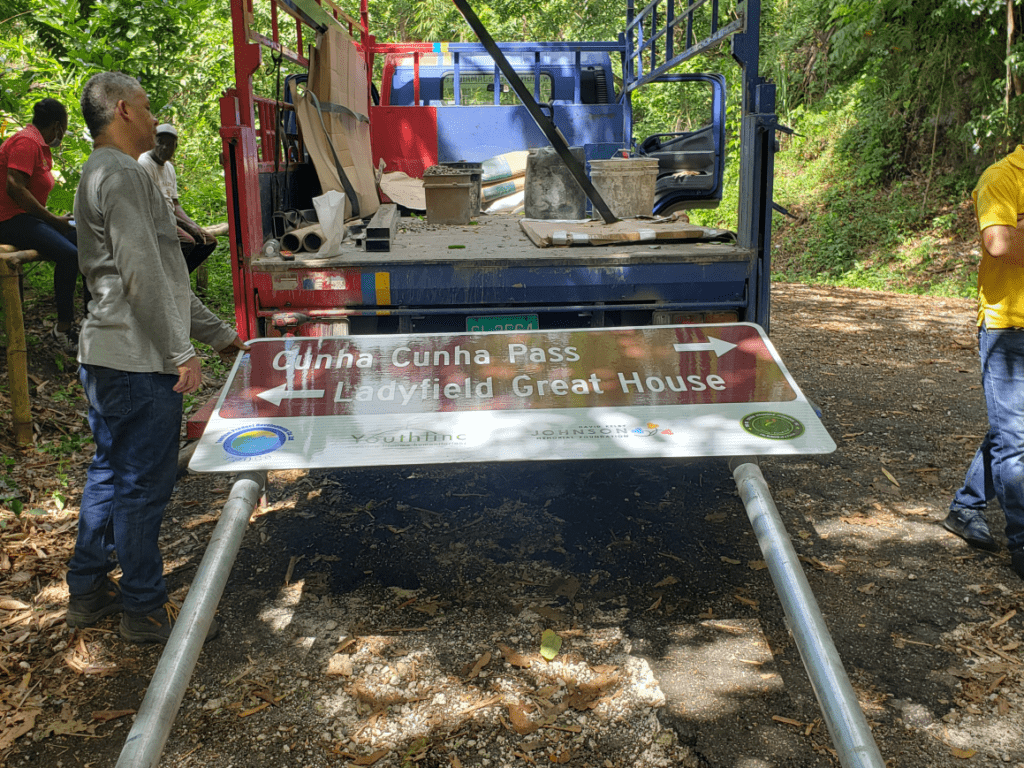The St. Thomas Renaissance Foundation, Inc. in collaboration with Tourism Product Development Company (TPDCo), Jamaica National Heritage Trust (JNHT), Youthlinc, and the David Kelby Johnson Memorial Foundation, erected signs to the historic Cunha Cunha Pass trail and the Ladyfield Great House.
HIKING THE HISTORIC CUNHA CUNHA PASS







Story of the Ladyfield Estate
The Ladyfield Estate was once a coffee plantation overlooking the Plantain Garden River Valley in the hills of St. Thomas-in-the-East. Coffee was introduced into Jamaica in 1728 from Martinique by Sir Nicholas Lawes, then Governor of Jamaica. He planted the first seven coffee trees at his Townwell Estate, now known as Temple Hall, in St. Andrew. Between 1728 and 1768, the coffee industry developed largely in the foothills of St. Andrew and then gradually spread into the Blue Mountains and the mountains of Manchester, St. Ann, and St. Elizabeth. Coffee was further boosted when French planters fled St. Dominique (now Haiti) at the end of the 18th century during the revolutionary war, and settled in Jamaica.
Though the exact date of Ladyfield’s establishment is unknown, it is believed to have been established by the early 1800s.
The Ladyfield Great House ruin is the most prominent relic of the coffee estate which once stood on the foothills of the Blue Mountains. This two-storey, large-cut-stone structure is estimated to date between the late 1700s and the early 1800s. The house has two wings; the larger northern and the smaller southern quarters. These two sections are joined by an arch and a staircase leading to the first floor.


Story of Cunha Cunha Pass
The Cunha Cunha Pass is an eight-kilometre (five-mile) long mountain trail that runs along the main ridge of the Blue Mountains. It connects Hayfield in St. Thomas with the Rio Grande Valley in Portland. The trail was first used by the Windward Maroons to travel between the two parishes. They used it as a strategic escape route to evade and attack the British forces during times of war and conflict.
The Cunha Cunha Pass was also an important trade route, particularly before the construction of the main road from Morant in St. Thomas to Port Antonio in Portland. It provided passage by foot or donkey, for farmers from Rio Grande Valley to markets on the southern plains.
In 1988, the Cunha Cunha Pass was wiped out by Hurricane Gilbert. It was later restored and reopened in 2002 through the efforts of a community-based organizations – the Bowden Pen Farmers’ Association in collaboration with the Environmental Foundation of Jamaica, the Jamaica Conservation Development Trust, and others. Today, the trail is one of the most popular routes through the Blue and John Crow Mountains. It is noted for its rich connection to the Maroons and endemic flora and fauna.









